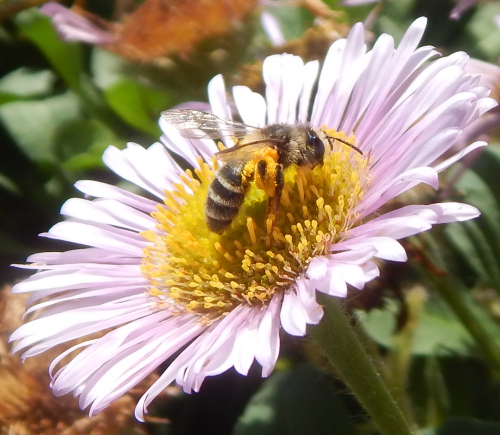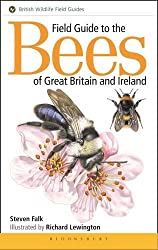Grey-backed mining bee - Andrena vaga
The Grey-backed mining bee - Andrena vaga is a vernal mining bee that emerges from mid-March onwards to coincide with the catkins produced by willows (Salix).
About The Grey-backed mining bee - Andrena vaga
It is a relatively large mining bee, with females measuring more than a centimeter in length, and up to 12.5mm.
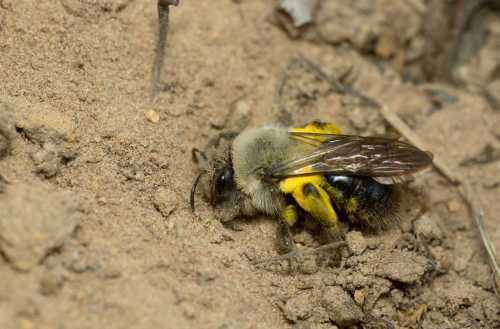 Grey backed mining bee - Andrena vaga - female
Grey backed mining bee - Andrena vaga - female
The females have dense grey hair on the thorax. The abdomen is shiny and black with tufts of grey hair on the outer edges of the abdomen.
The hind legs, have thick hairs for collecting pollen.
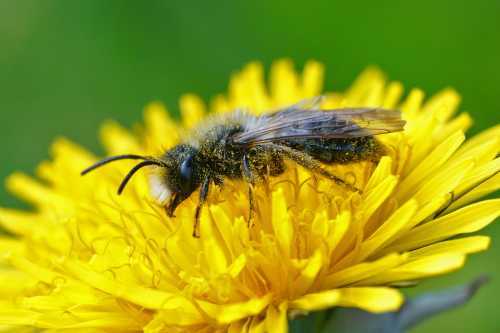 Grey backed mining bee - Andrena vaga - male
Grey backed mining bee - Andrena vaga - maleMales are usually a little smaller, and more slender, although there is some variation here, with recordings of large males reported.
As with all members of the Andrenidae family, the Grey-backed mining bee is short-tongued.
At first glance, this species are similar in appearance to the male of the Ashy mining bee, Andrena cineraria. However, females can easily be distinguished by the presence of a black band on the thorax which is easily visible on the Ashy mining bee.
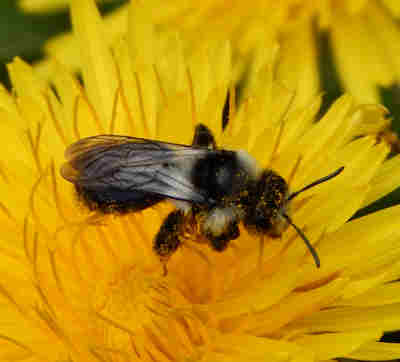 Ashy mining bee, Andrena cineraria - female.
Ashy mining bee, Andrena cineraria - female.Habitat and foraging
Grey-backed mining bees are ologolectic, gathering pollen only from willows, and therefore need a willow-rich habitat. Furthermore, they prefer loose soil for their nest burrows.
Because of the patchy availability of their required habitat, populations can become fragmented, and in the UK, the species had been assumed extinct. It was discovered again in 2010, and is now recorded in a limited number of locations as of 2022.
Where this species is abundant in continental Europe, nests can occur in large aggregations.
Studies of this species have confirmed that females have separate pollen and nectar gathering days, but rarely do they collect both on the same day1,2. 'Pollen days' are more frequent than 'nectar days'. It is believed that the female first provisions each nest cell with pollen, and then adds the nectar.
On ''pollen days'' Andrena vaga takes three trips on average, but gathers quite a lot of pollen - nearly twice as much as another early mining bee, Colletes cunicularius1.
Parasites
The endoparasite Stylops mellitae is known to parasitize nests of Andrena varga2. Larvae of this parasite are spread via flower pollen that is gathered during foraging trips and returned to the nest burrow.
In the nest, the parasite larvae penetrate the host larvae. Female hosts are usually parasitized, rather than males. The parasite develops in the abdomen, and alters the behaviour and physical characteristics of the adult.
Parasitized adult females leave the nest earlier than non-parasitized individuals, and are less efficient in pollen collecting. They cease to be active after digging out their nests.
In Field Guide to Bees Of Great Britain And Ireland, Falk notes that the nomad bee, Nomada lathburiana is another parasite of this species.
References
1. Bischoff I., Feltgen K., Breckner D. (2016). Foraging Strategy and Pollen Preferences of Andrena vaga (Panzer and Colletes ciinicularius (L .) ( Hymenoptera: Apidae ).
2. Rezkova K., Žáková M., Žáková Z. & Straka J. (2012): Analysis of Nesting Behavior Based on Daily Observation of Andrena vaga (Hymenoptera: Andrenidae). Journal of Insect Behavior 25: 24-47.
If you found this page helpful or interesting, I'd really be grateful if you would share it with others - if not this page, perhaps another, such as Gardening For Bees.
Thank you so much :) .
